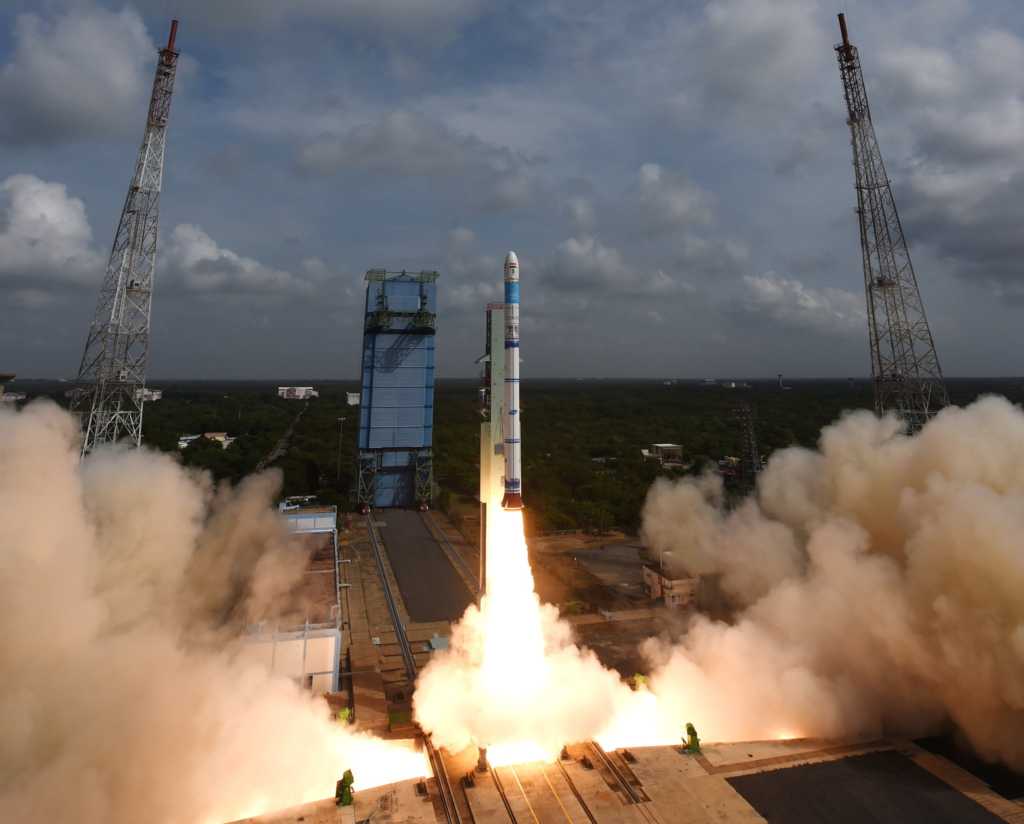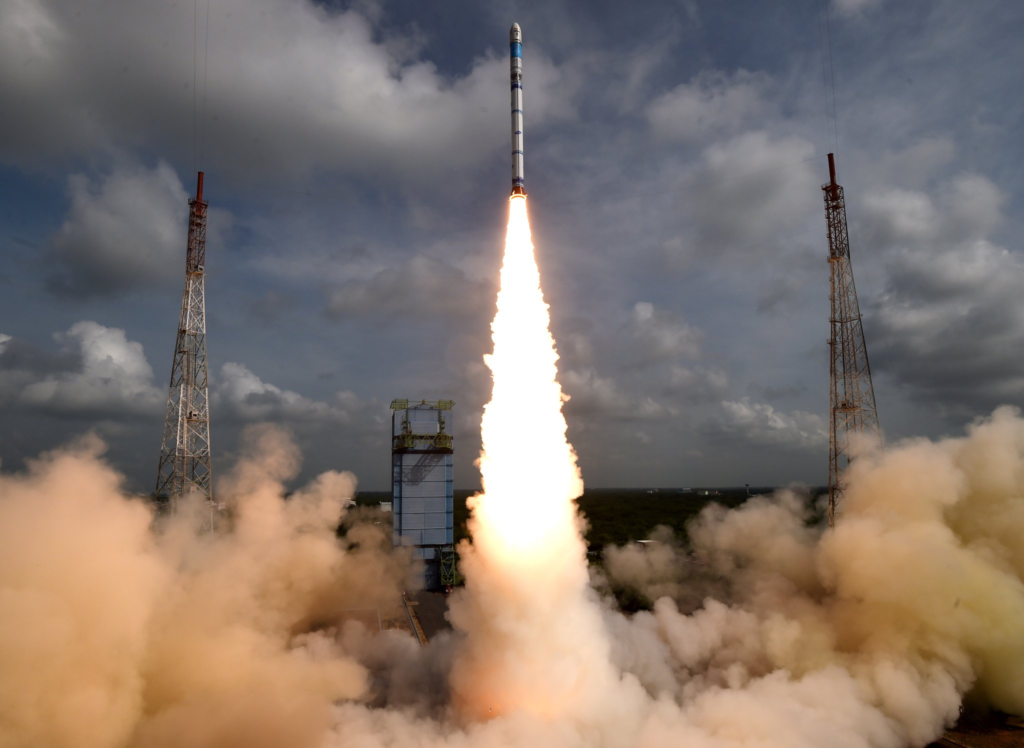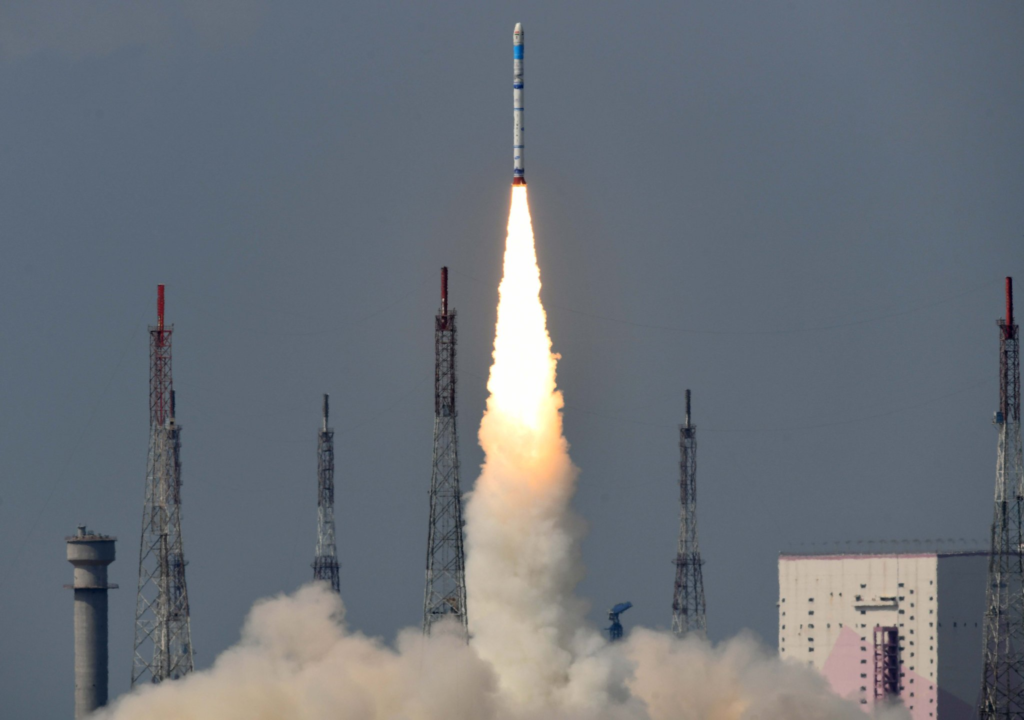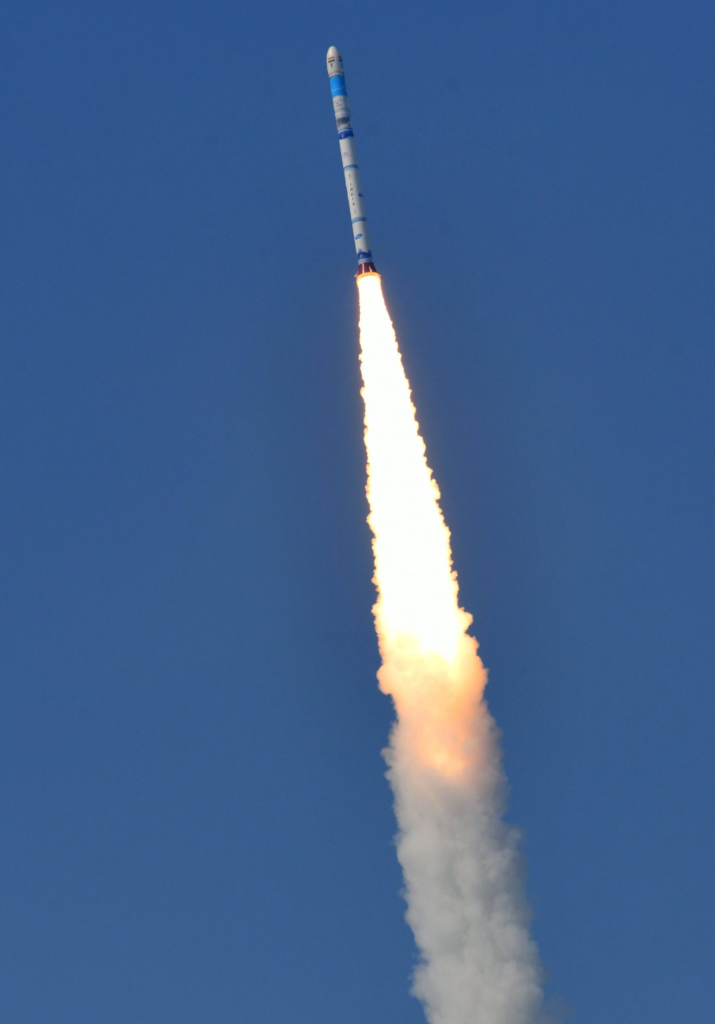The Indian Space Research Organisation (ISRO) successfully launched the EOS-08 Earth Observation Satellite on August 16, 2024. This mission utilized the Small Satellite Launch Vehicle (SSLV)-D3, which took off from the first launch pad at the Satish Dhawan Space Centre located in Sriharikota. The SSLV-D3 marked its third and final development flight, lifting off at precisely 9:17 AM.
Seventeen minutes later, the EOS-08 satellite was successfully placed into a circular orbit at an altitude of 475 kilometers, as planned.

“The third developmental flight of the SSLV, designated SSLV-D3, has successfully deployed the EOS-08 satellite. The rocket has accurately positioned the spacecraft in the intended orbit. I can confirm that there were no discrepancies in the injection parameters. Current assessments indicate that all conditions are optimal,” stated ISRO Chairman S. Somanath following the successful launch.
Mr. Somanath further noted that with the successful deployment of SSLV-D3, ISRO has officially completed the development phase of the SSLV.
“We are now in the process of transferring SSLV technology to the industry, paving the way for serial production and launches of the SSLV. This marks a significant milestone,” Mr. Somanath added.

The EOS-08 mission is a pioneering initiative utilizing ISRO’s standard Microsat/IMS-1 bus, equipped with a range of advanced payloads for infrared observation, a novel GNSS-R payload, and a silicon carbide UV dosimeter.
The satellite is equipped with a range of advanced technological innovations in its mainframe systems, including an Integrated Avionics system featuring a Communication, Baseband, Storage, and Positioning (CBSP) Package, a structural panel integrated with a printed circuit board (PCB), an embedded battery, a Micro-DGA (Dual Gimbal Antenna), an M-PAA (Phased Array Antenna), as well as a flexible solar panel and a Nano star sensor, among others, for onboard technology demonstration. The launch is scheduled to take place via the SSLV-D3.
Additionally, the satellite is designed to accommodate three payloads: the Electro Optical Infrared Payload (EOIR) from SAC, the Global Navigation Satellite System-Reflectometry payload (GNSS-R) from SAC, and the SiC UV Dosimeter from LEOS.
ISRO to transfer SSLV to private sector
The EOIR payload is designed to capture images in the Mid-Wave Infrared (MIR) and Long-Wave Infrared (LWIR) bands, operational both during the day and at night. Its applications encompass satellite-based surveillance, disaster monitoring, environmental assessments, fire detection, volcanic activity observation, and monitoring of industrial and power plant incidents.

The GNSS-R payload aims to showcase the potential of GNSS-R-based remote sensing for various applications, including the measurement of ocean surface winds, soil moisture assessment, cryosphere studies in the Himalayan region, flood detection, and identification of inland water bodies.
The SiC UV Dosimeter is intended to measure UV irradiance at the viewport of the Crew Module for the Gaganyaan Mission and serves as a high-dose alarm sensor for UV radiation.
The spacecraft mission is configured to operate in a Circular Low Earth Orbit (LEO) at an altitude of 475 km, with an inclination of 37.4°, and is designed for a mission duration of one year. Additionally, the SR-0 DEMOSAT, developed by Space Kidz India, was also successfully placed into the designated orbit.

The SSLV is engineered to launch Mini, Micro, or Nano satellites, weighing between 10 to 500 kg, into a 500 km planar orbit. It is a three-stage launch vehicle that utilizes solid propulsion for the initial stages and a liquid propulsion-based Velocity Trimming Module (VTM) for the final stage.
As per ISRO, the design objectives of the SSLV include cost-effectiveness, rapid turnaround time, flexibility in accommodating multiple satellites, the feasibility of on-demand launches, and minimal requirements for launch infrastructure.


Leave a Reply